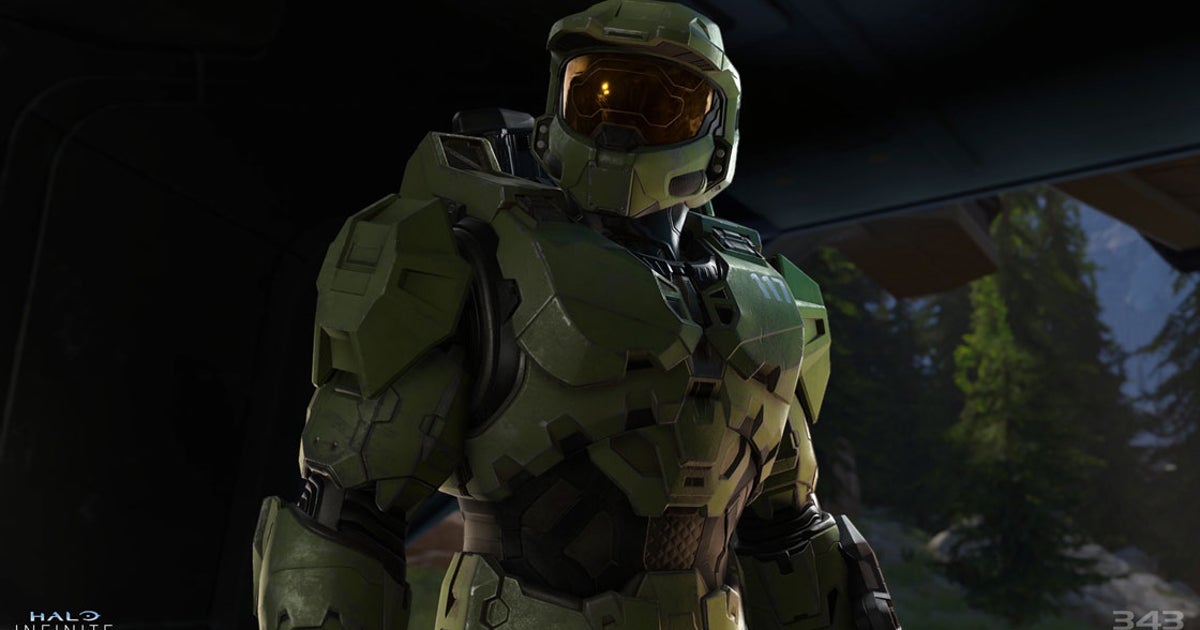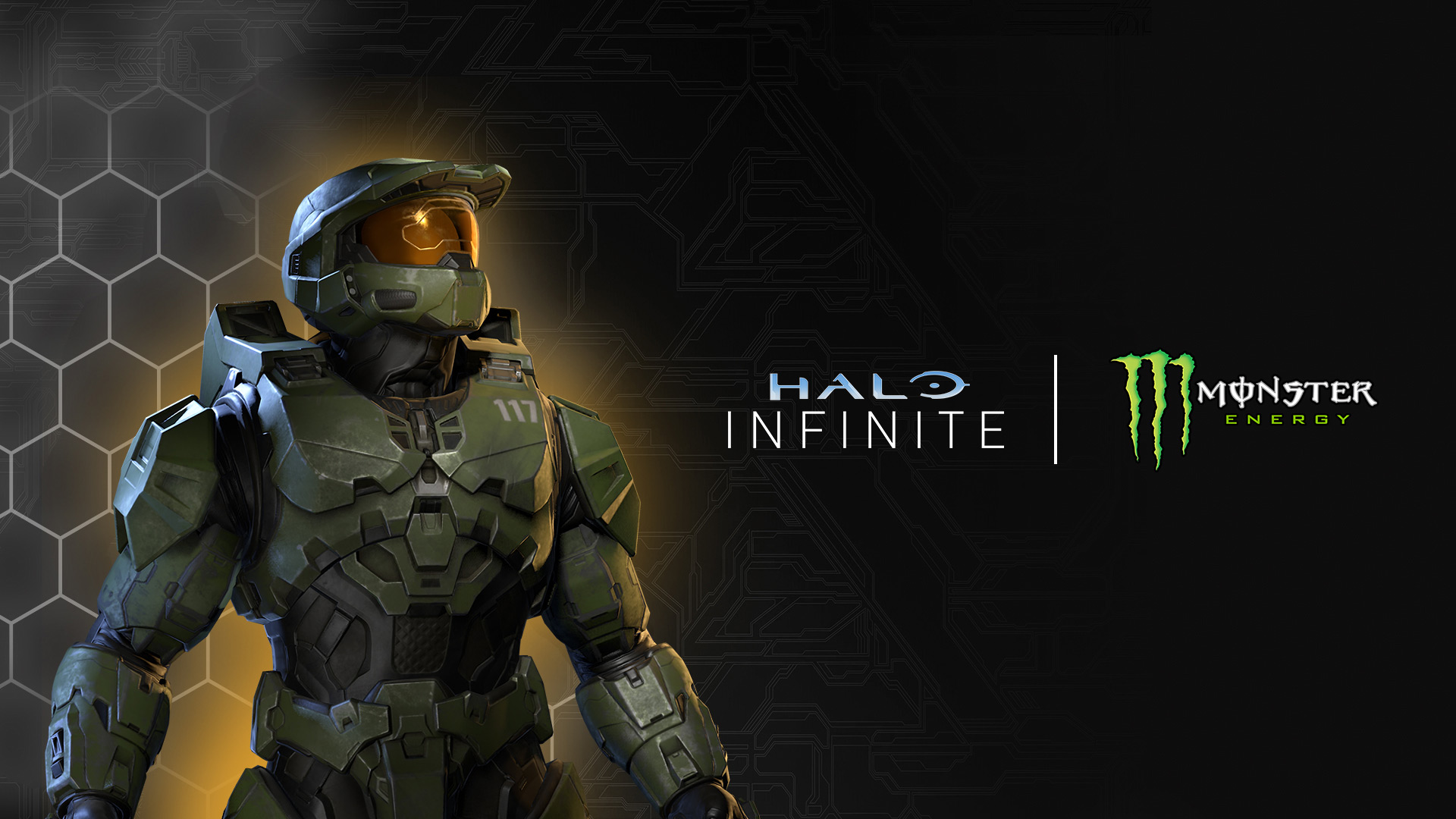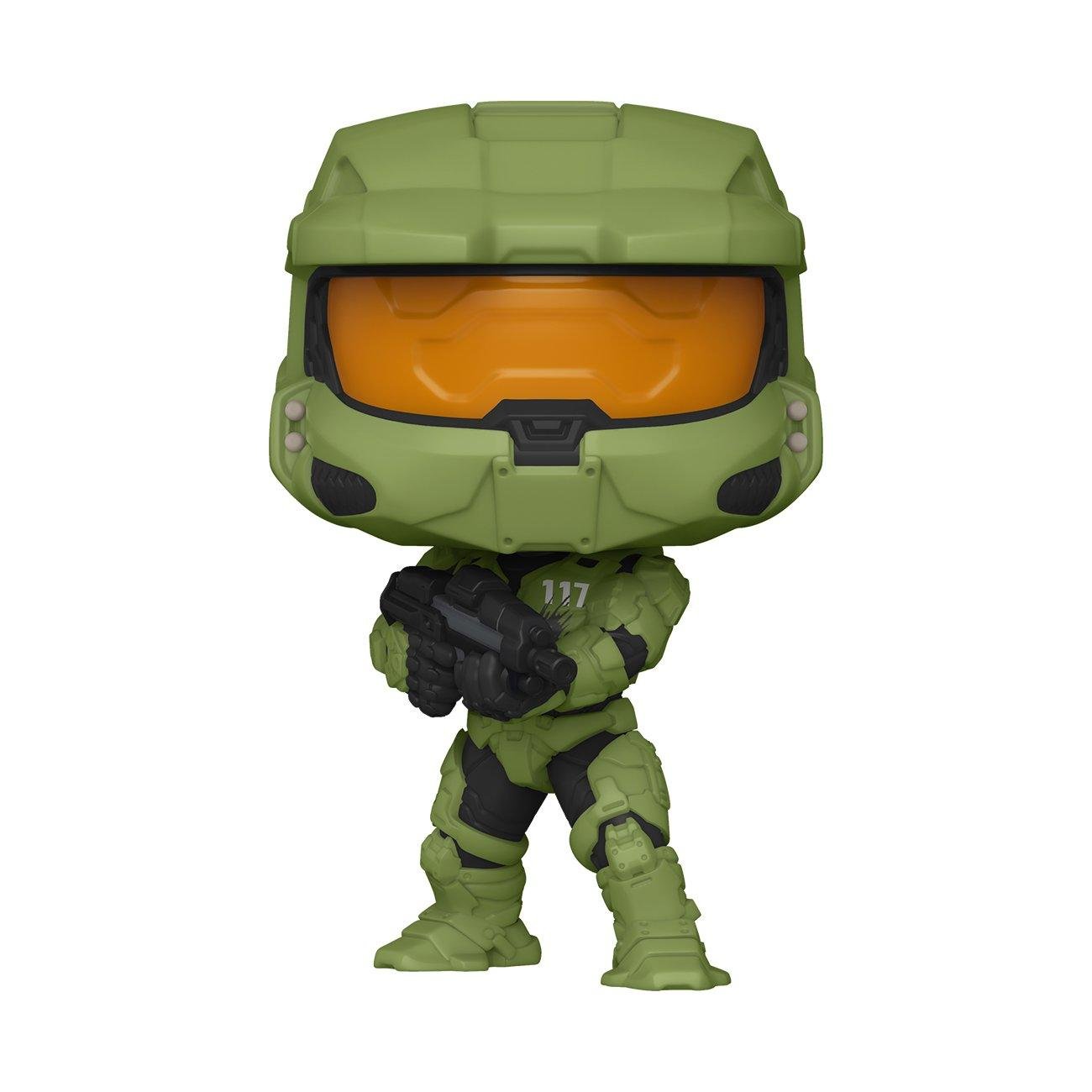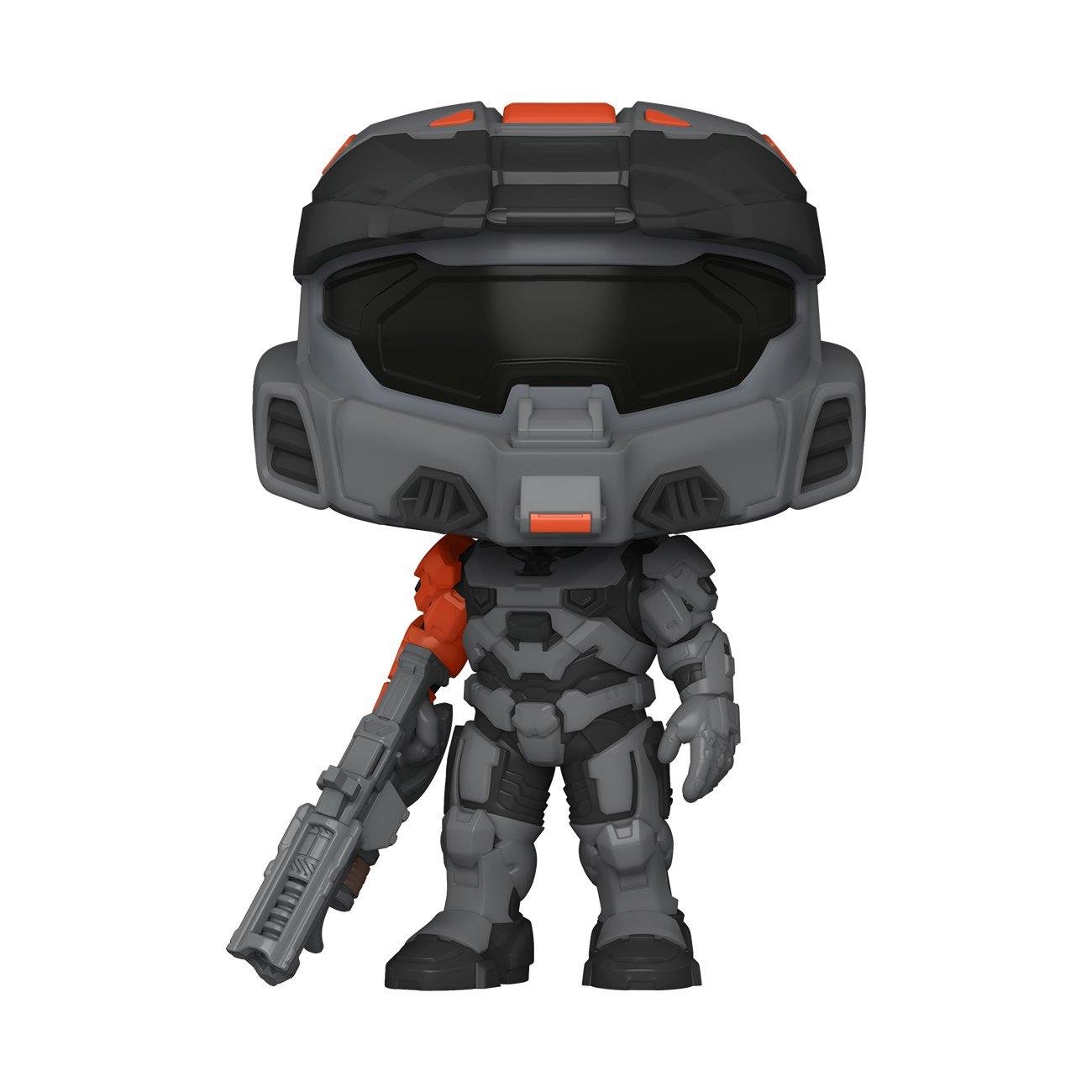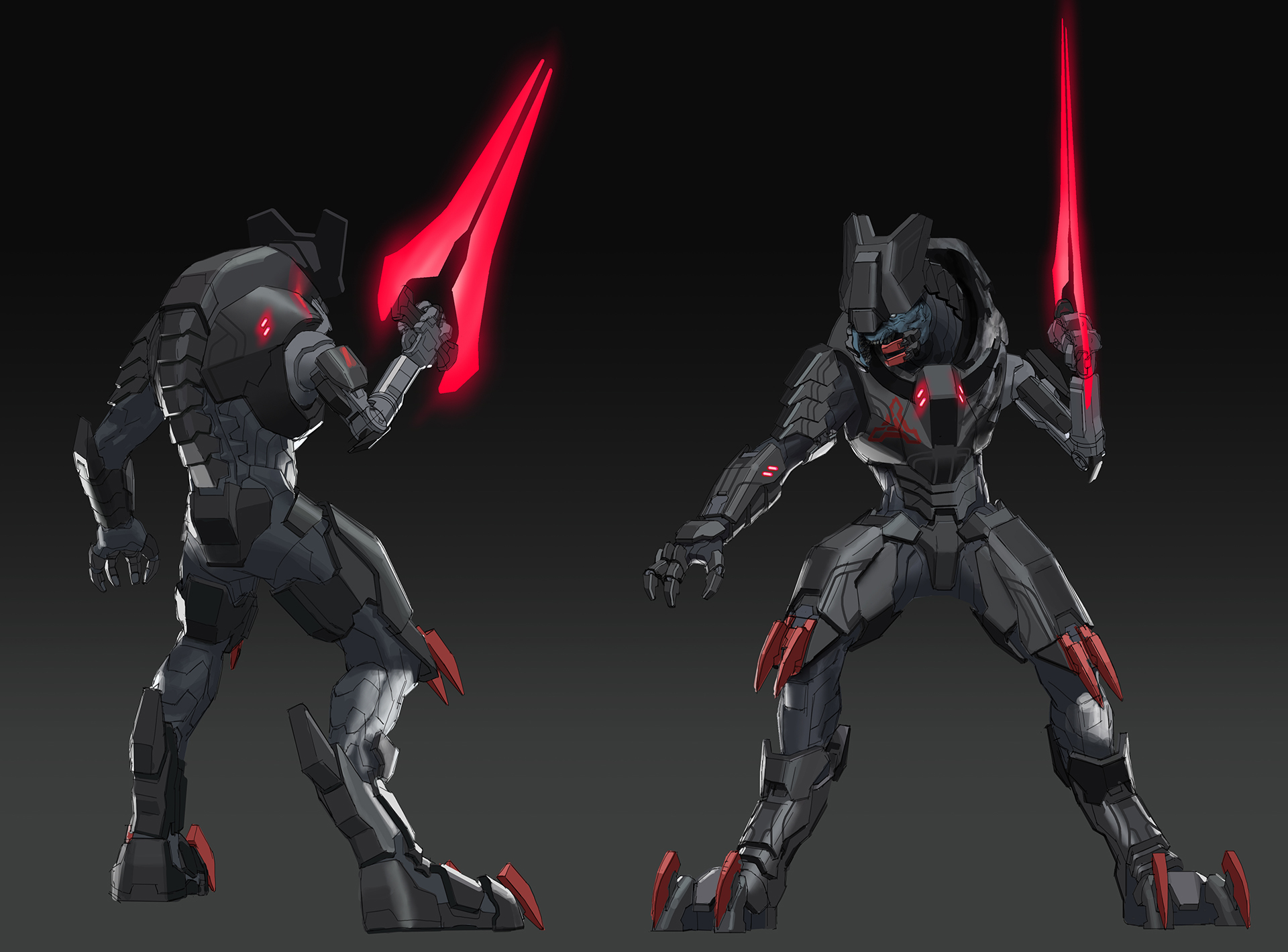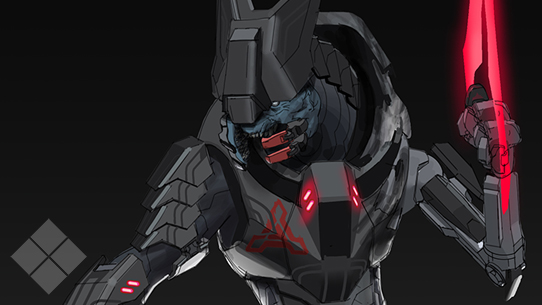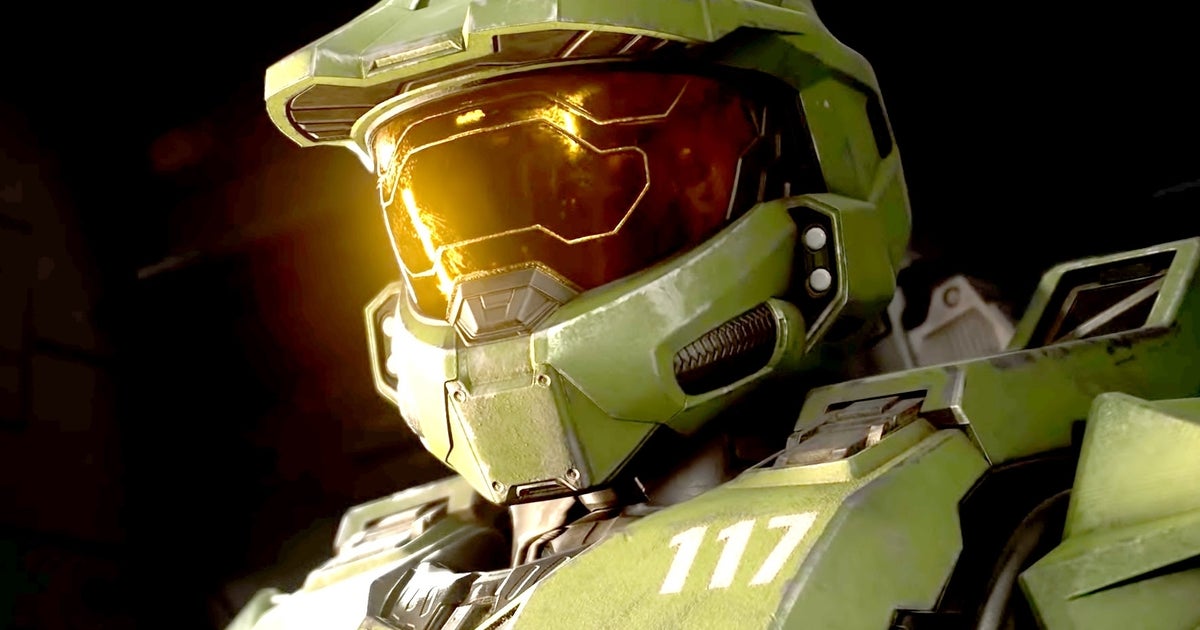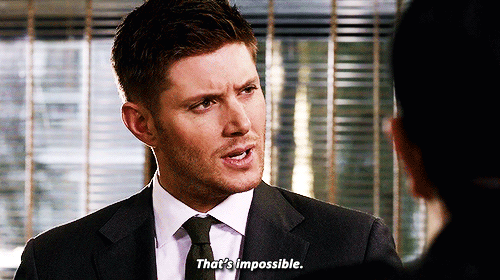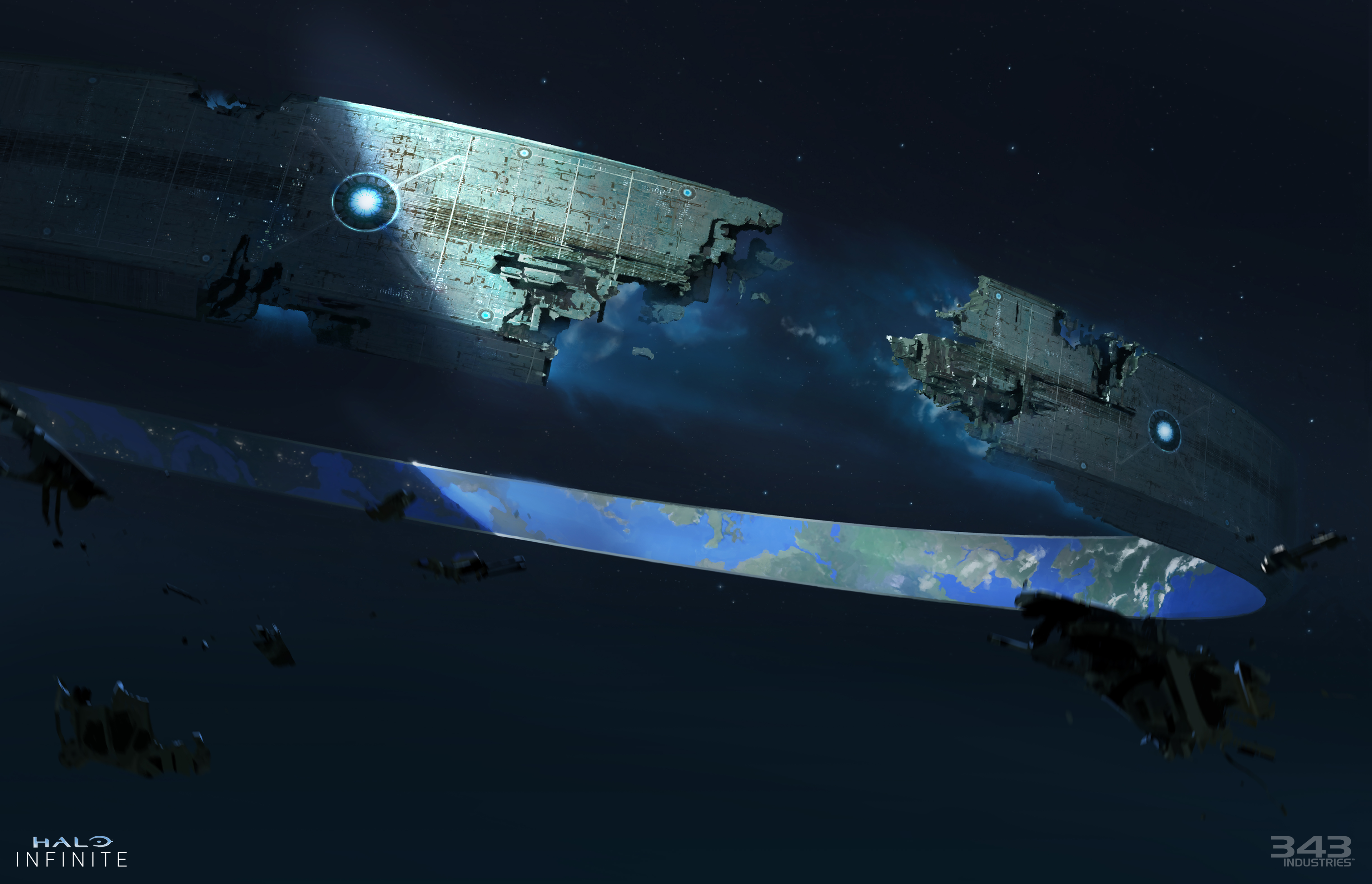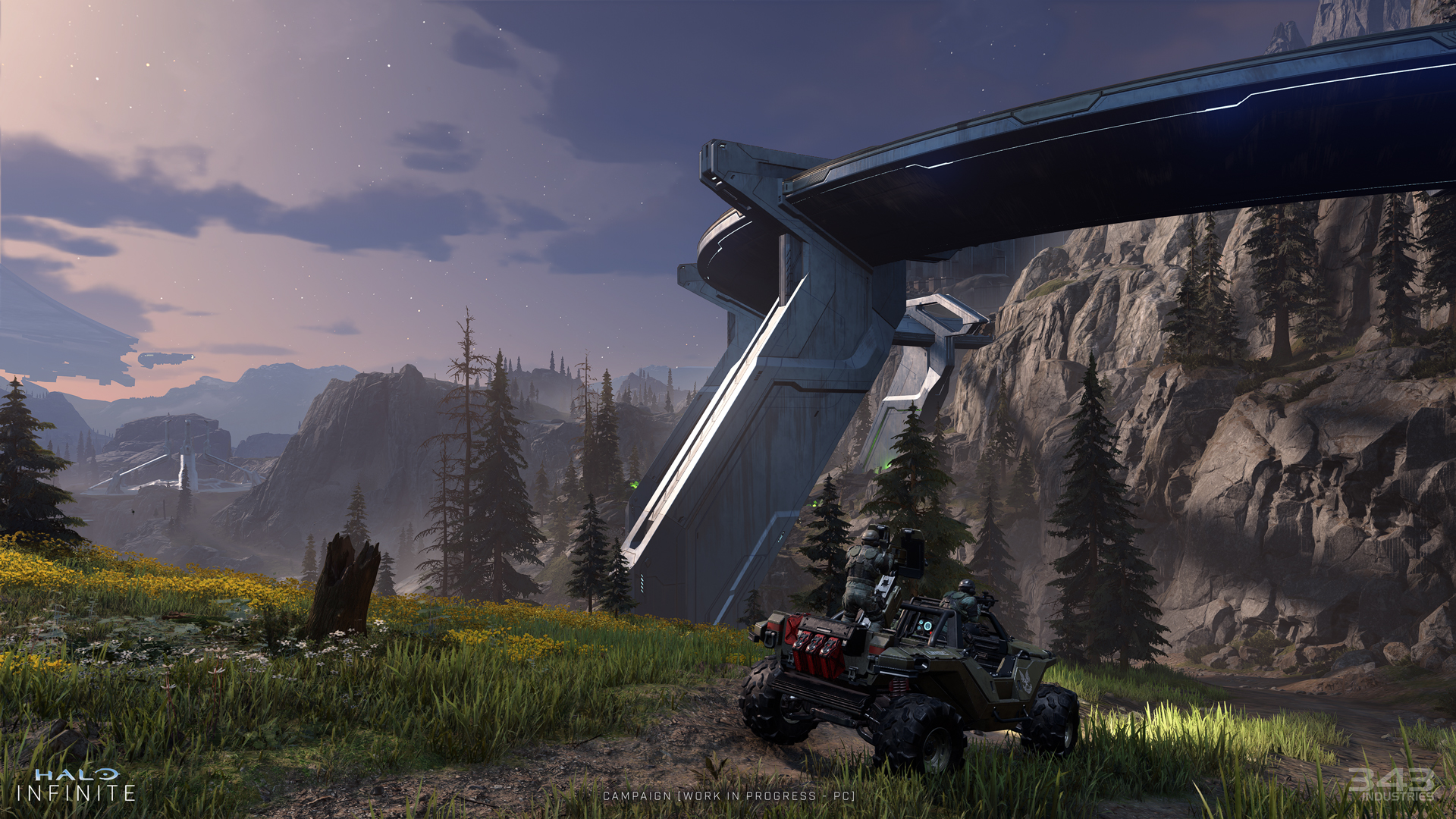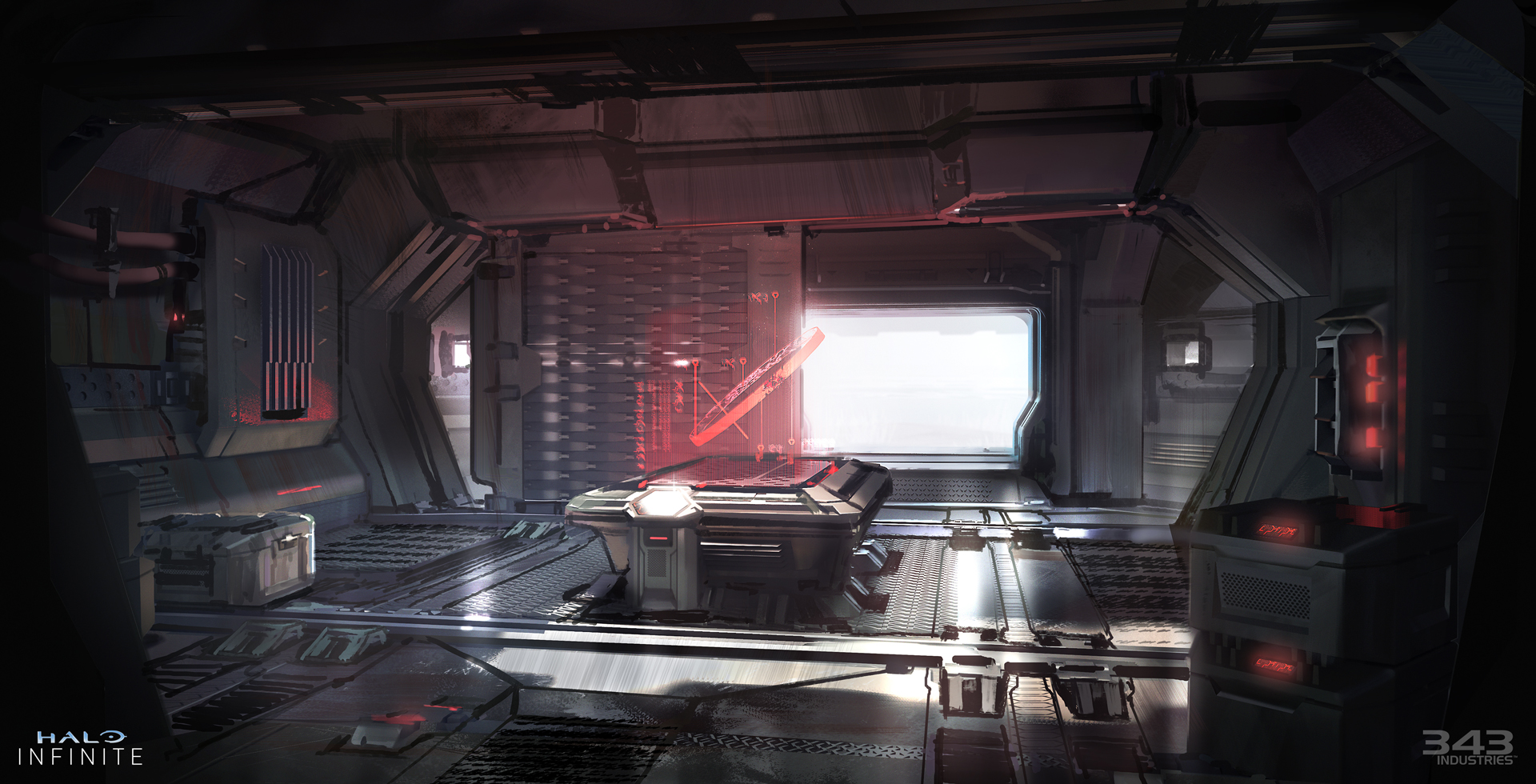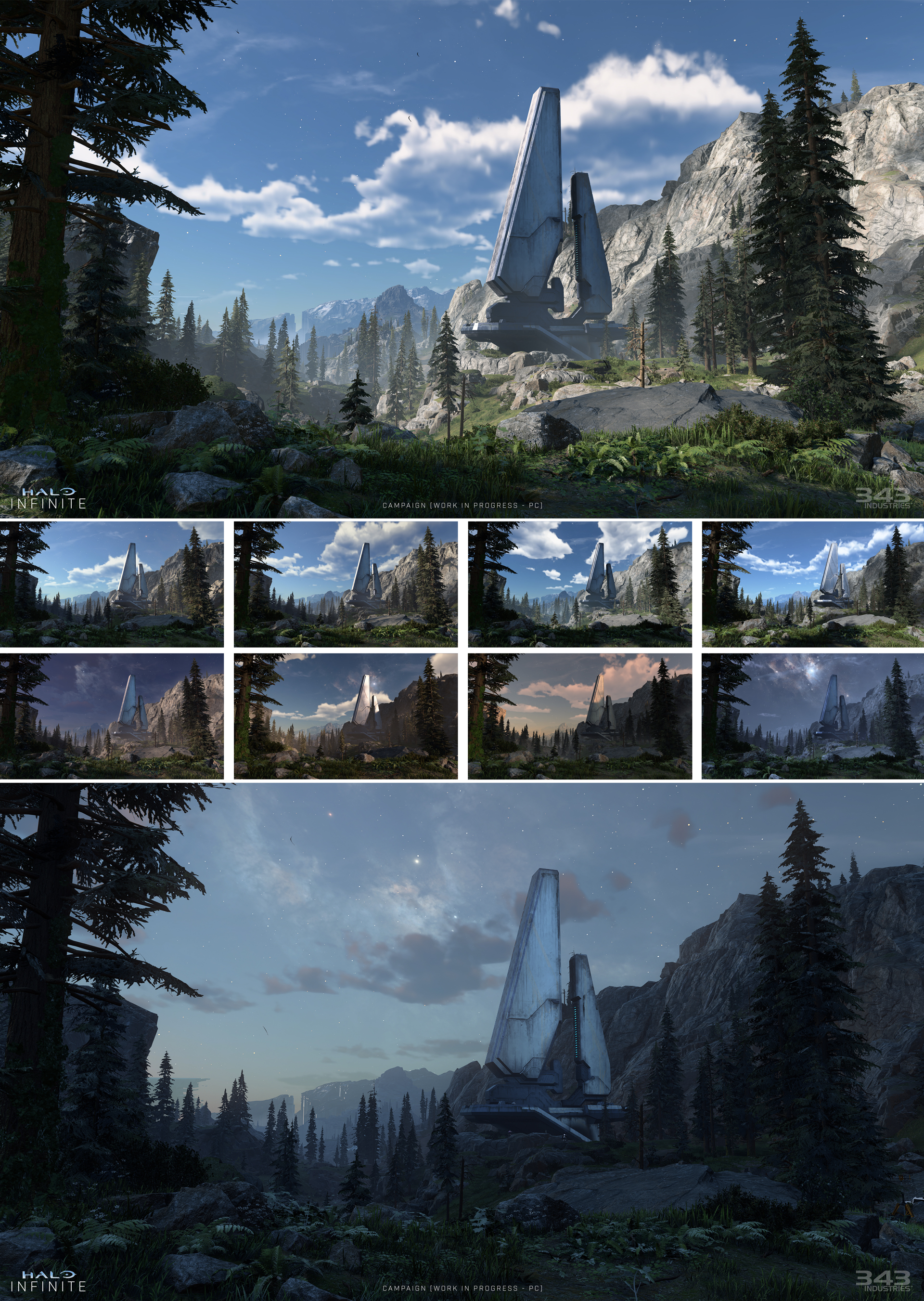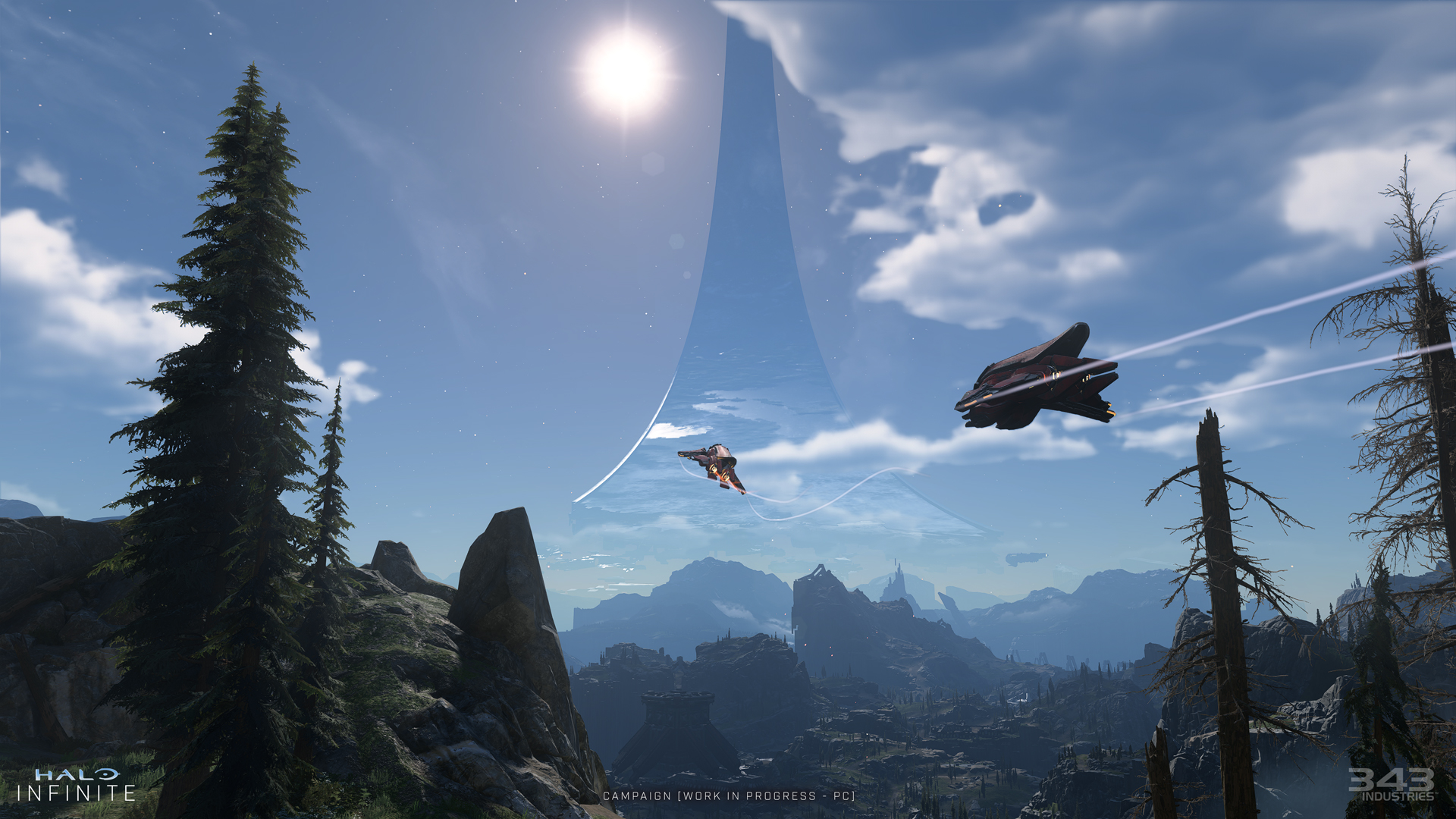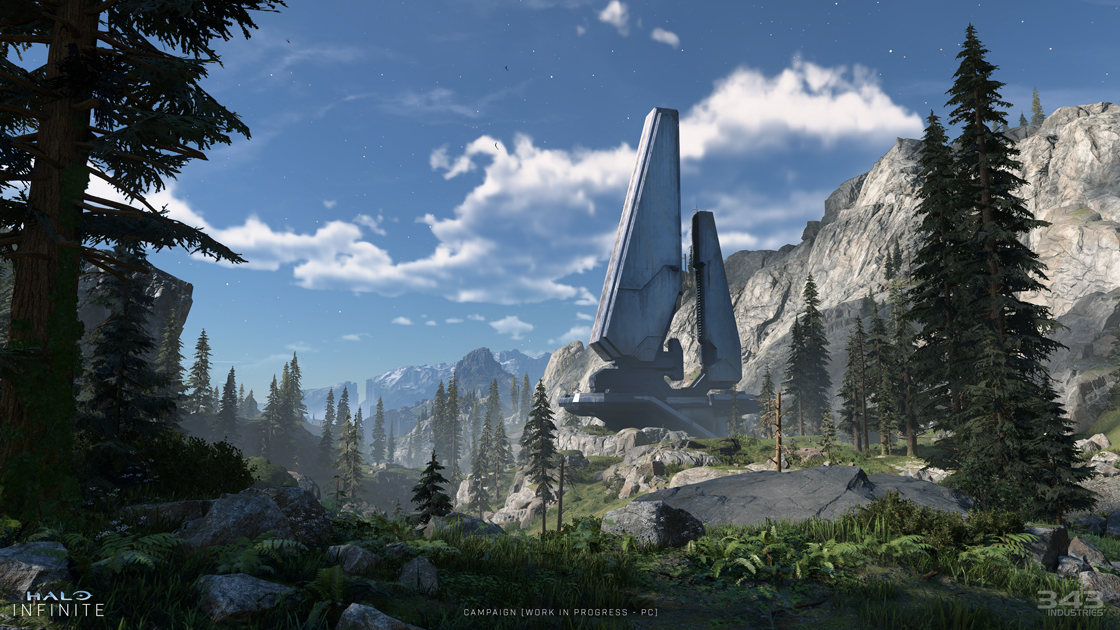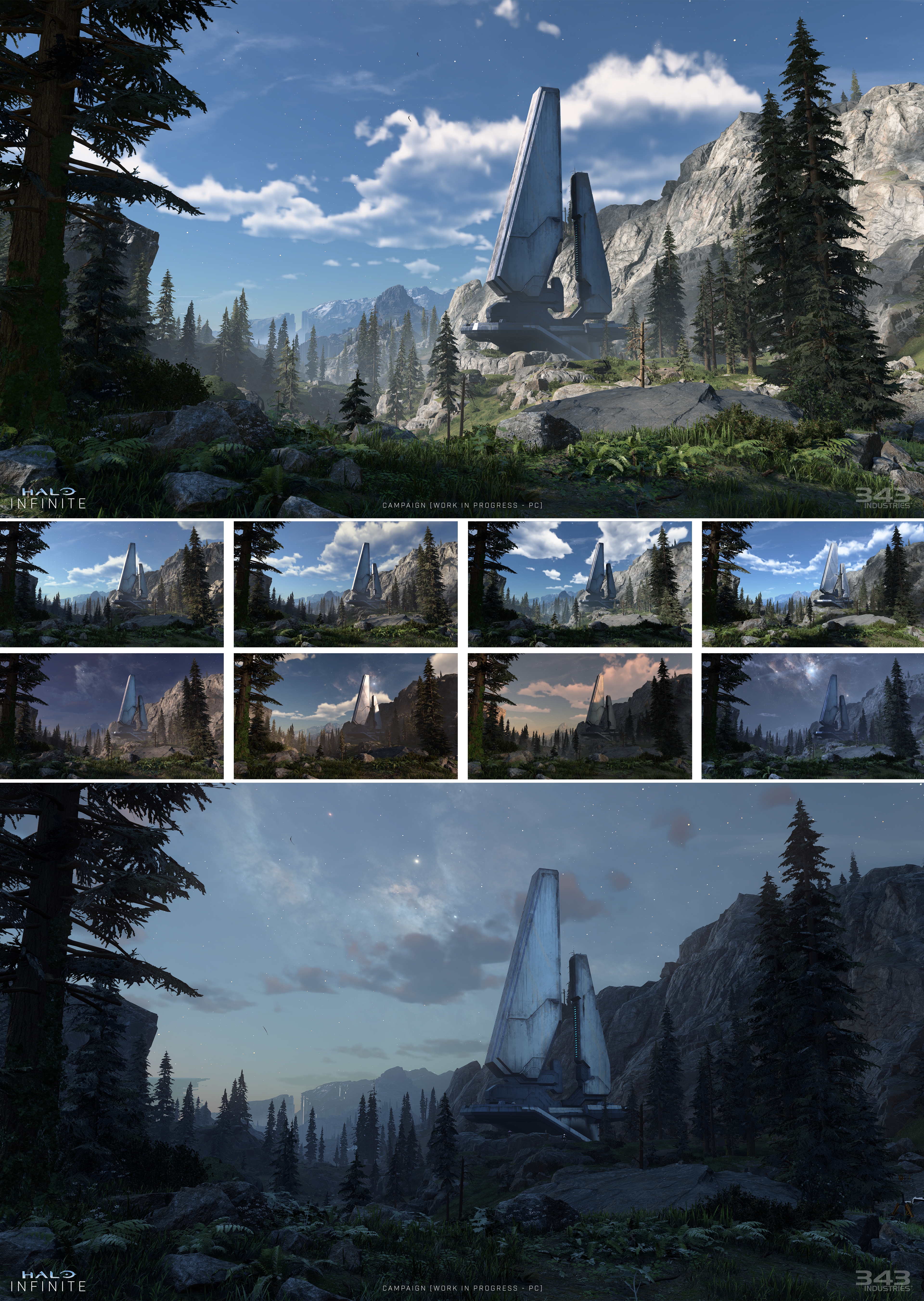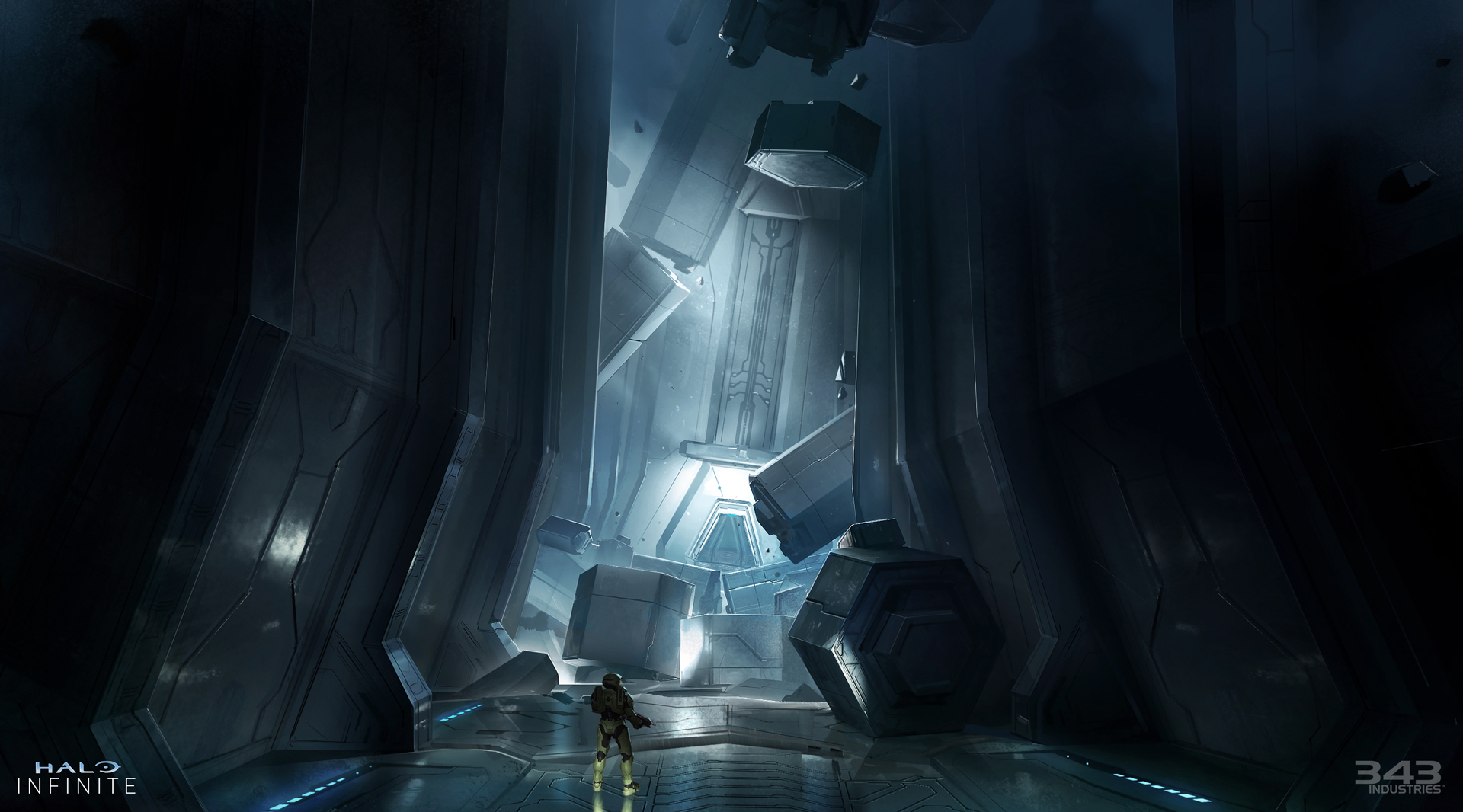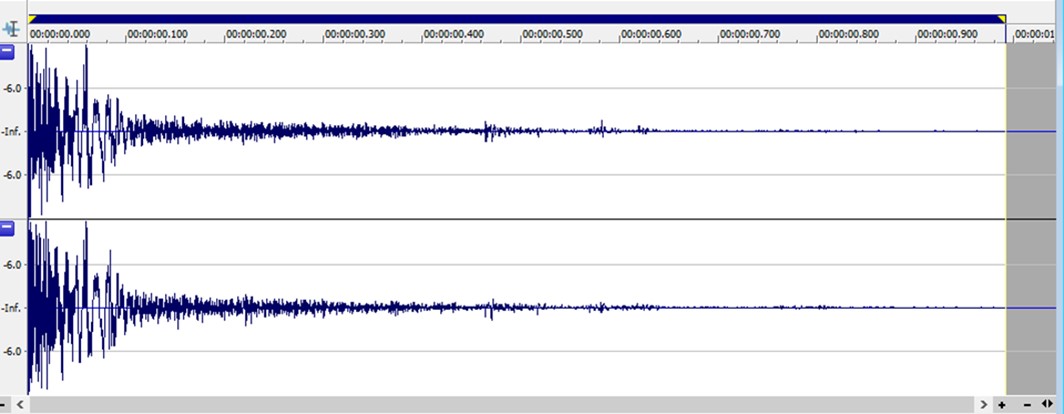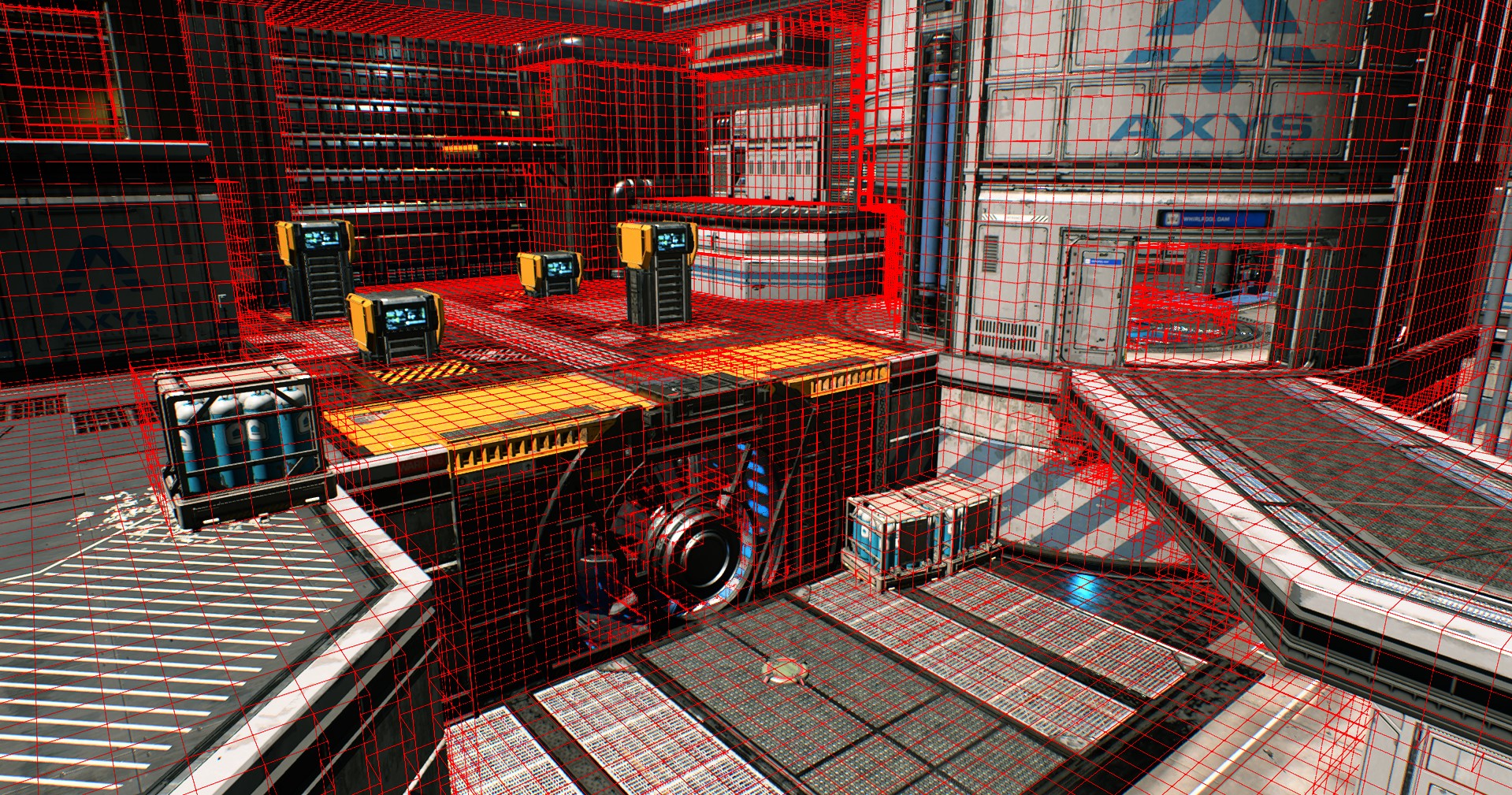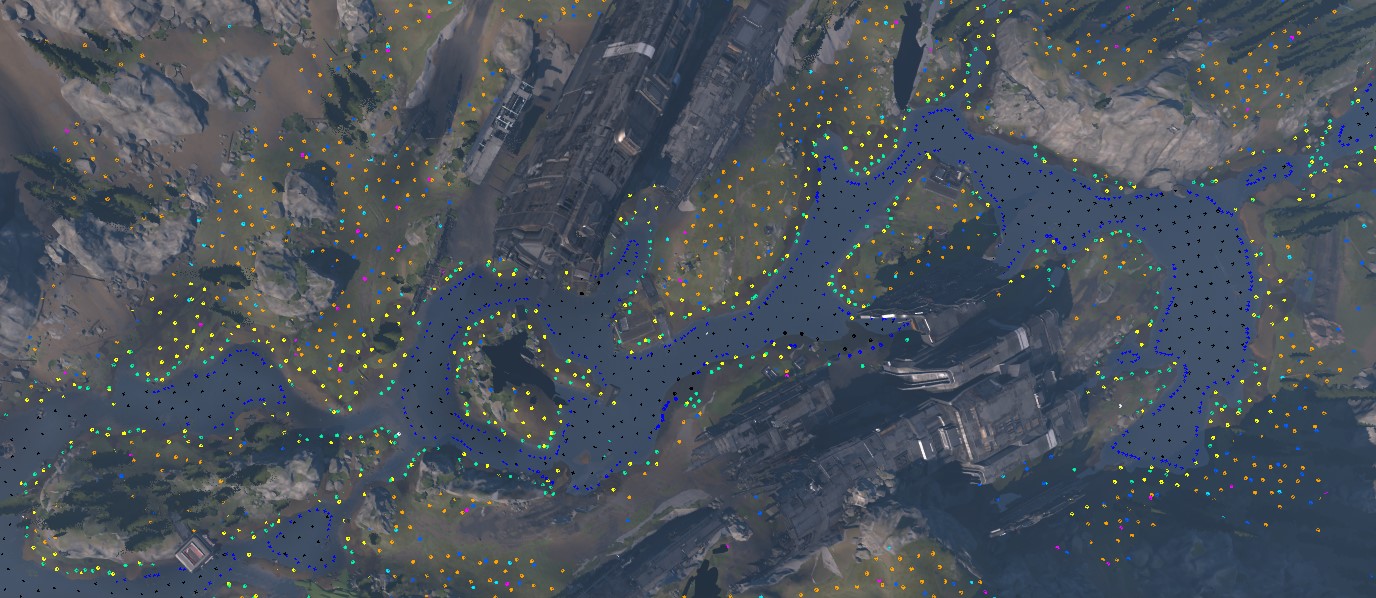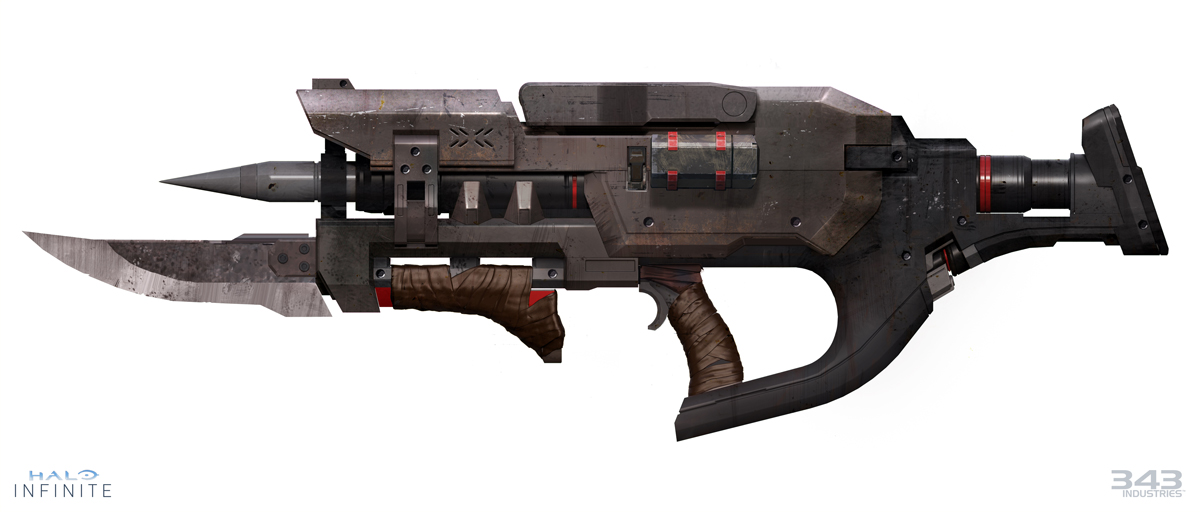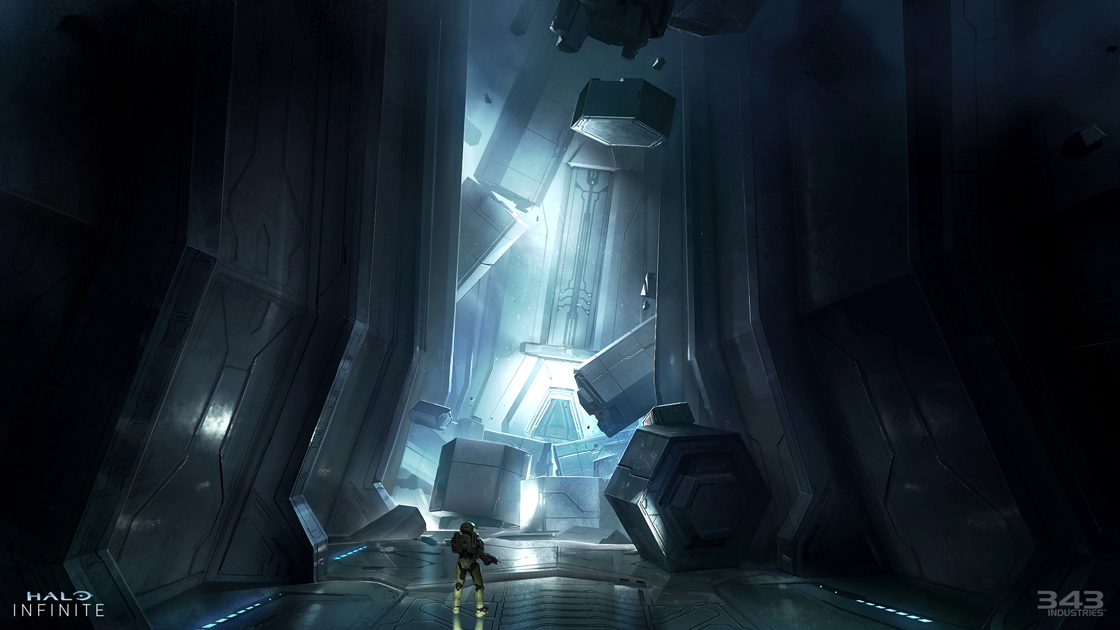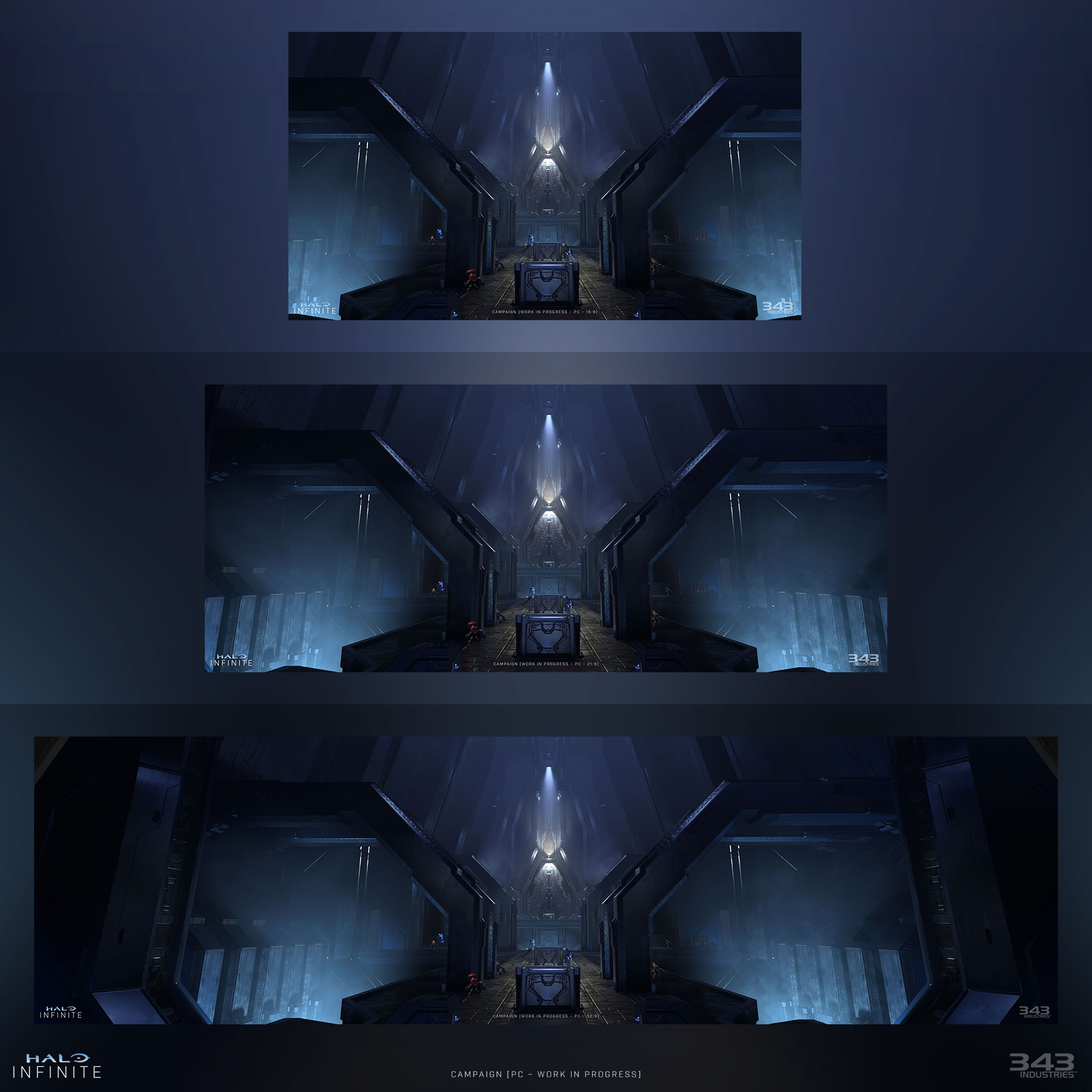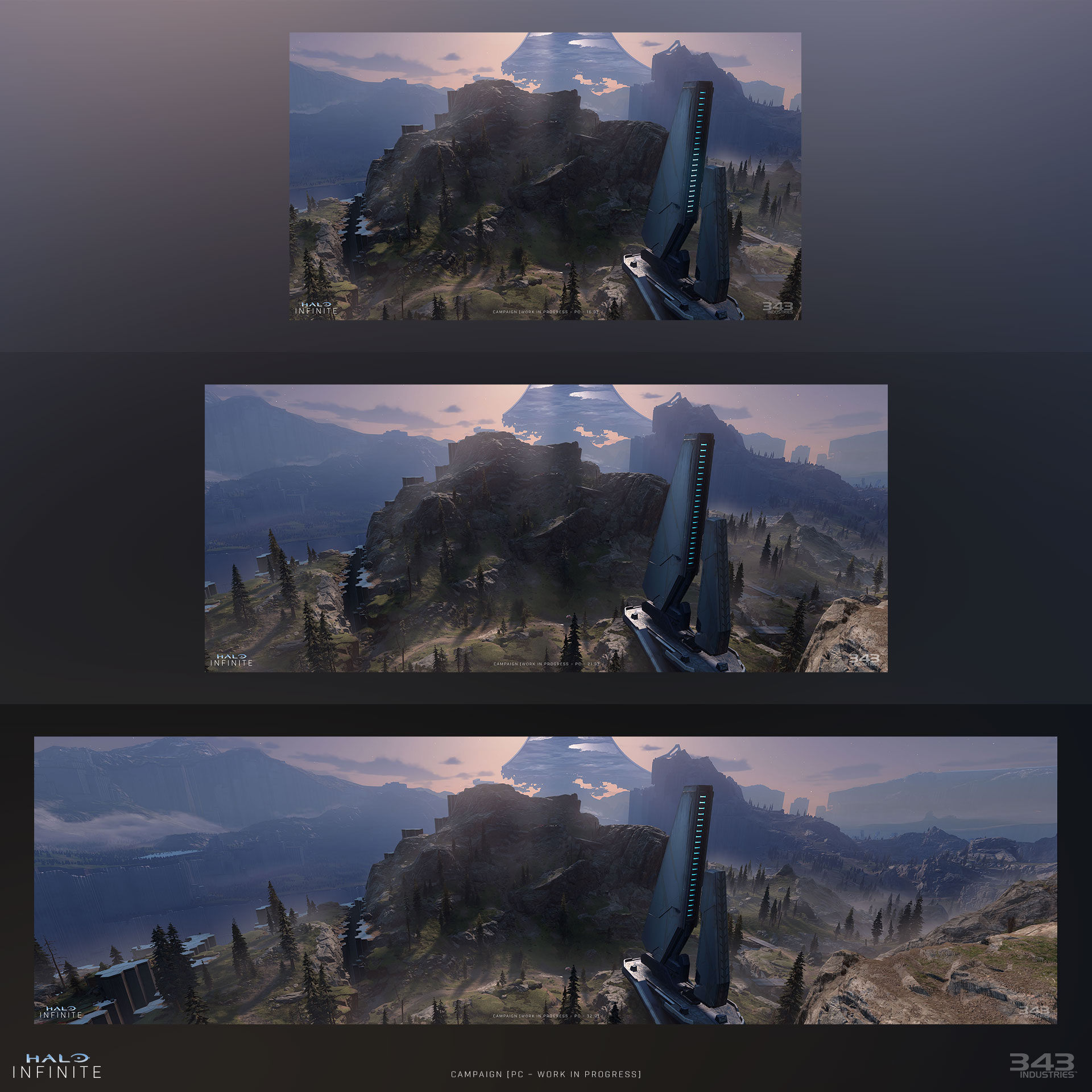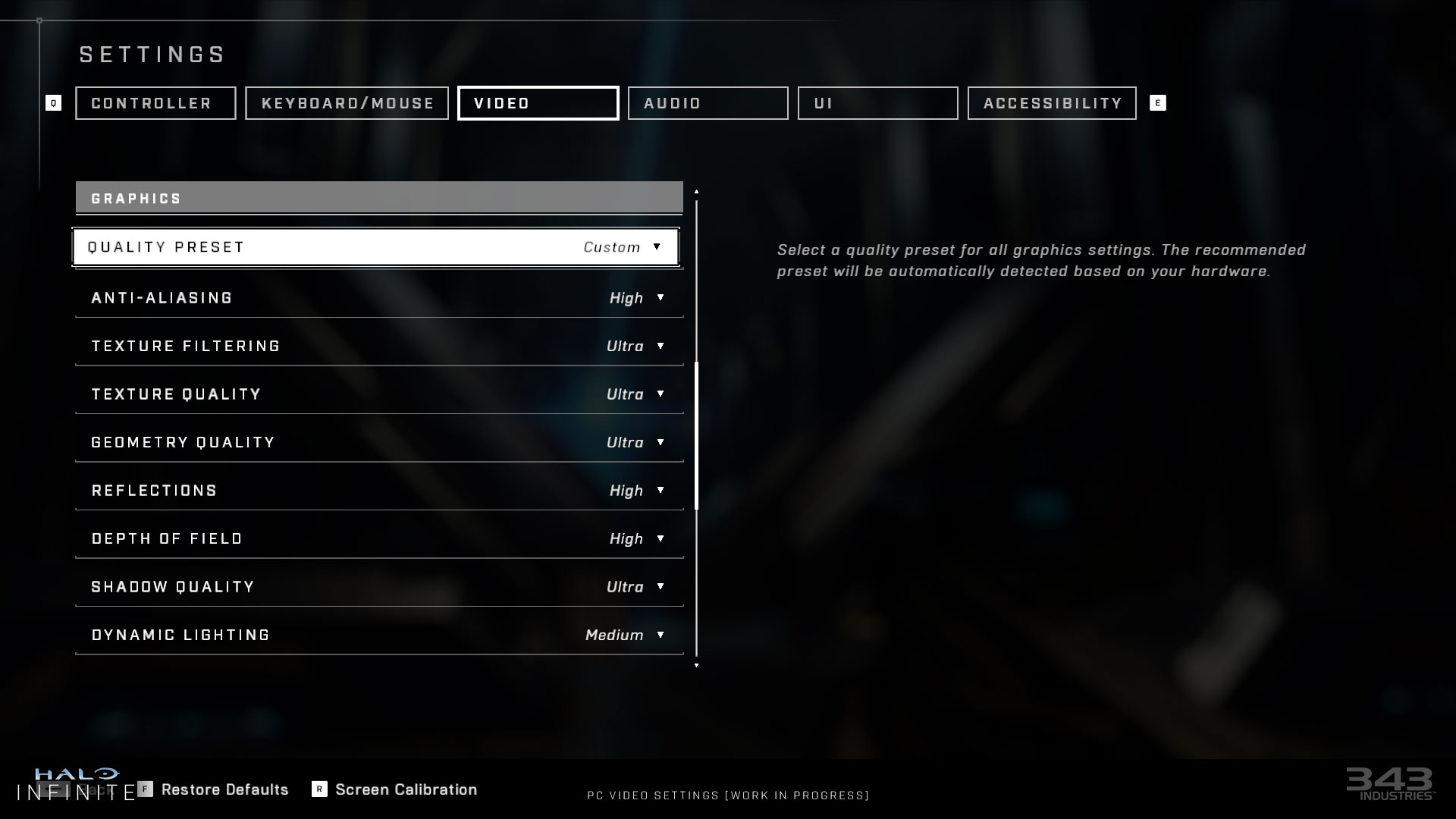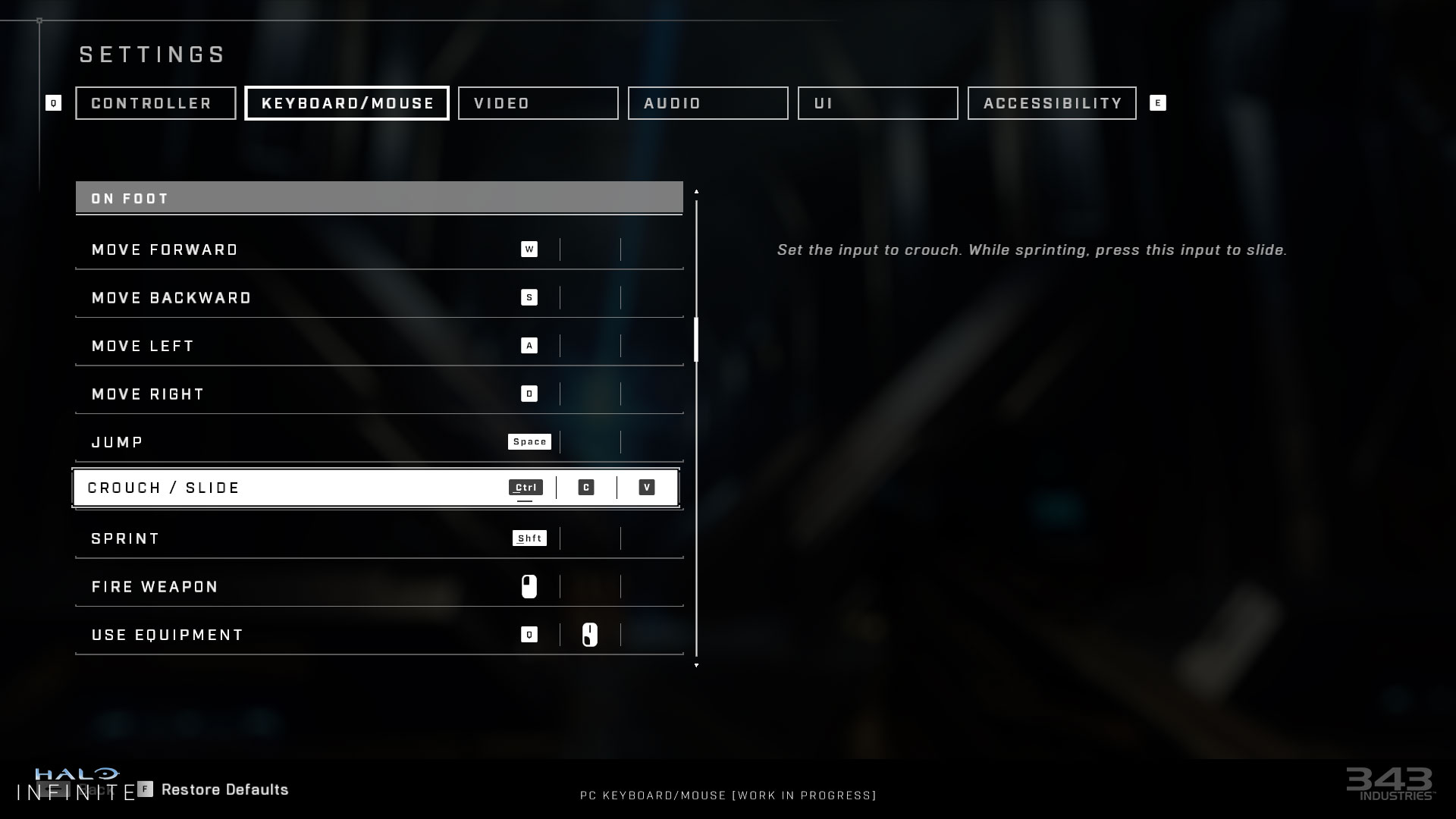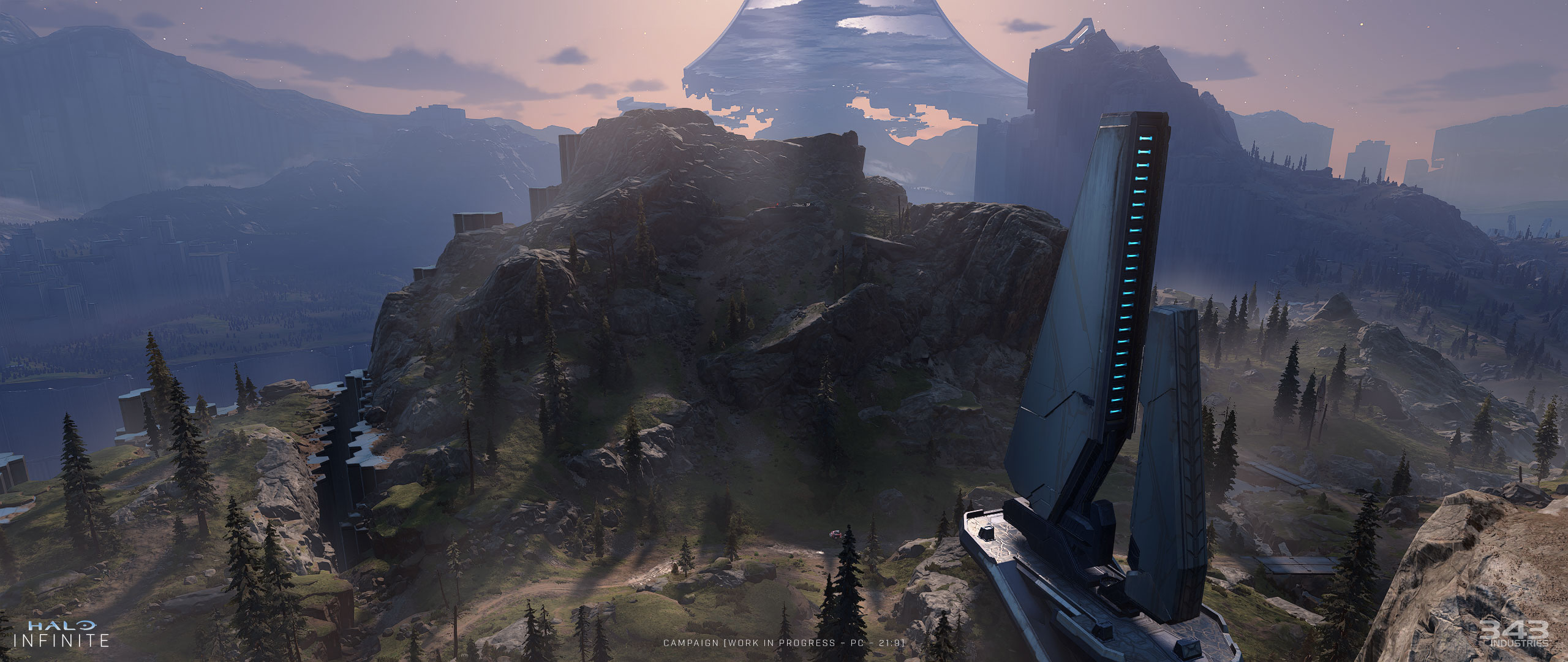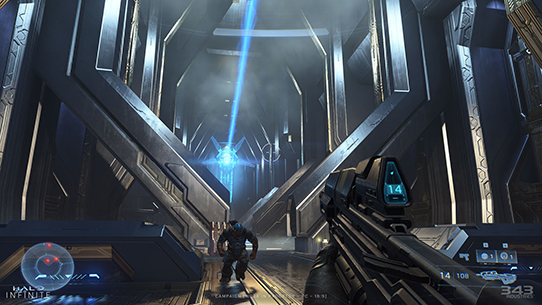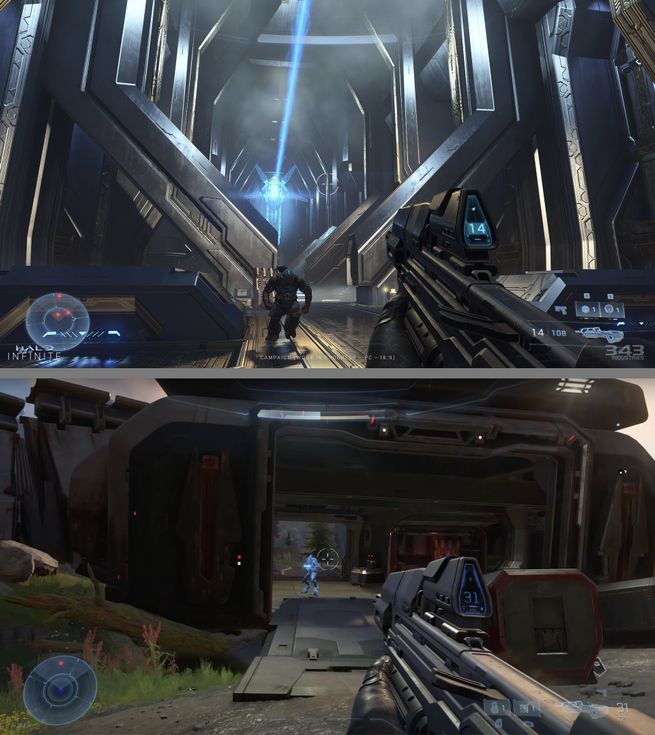INSIDE INFINITE - MARCH 2021
BY 343 INDUSTRIES
Welcome back to another Inside Infinite, our monthly blog series where we provide an in-depth look at key components of Halo Infinite. In this installment, we’ve asked the 343 Audio Team to bring you closer to their process than ever before.
If you haven’t seen our previous Inside Infinite posts, we highly recommend reading them to learn more about the game!
- Art, Graphics, & Live: Hear about our improvements since last year’s campaign demo and get an early glimpse at player customization.
- Sandbox: Learn about how we designed the weapons, vehicles, equipment, grenades, and more to ensure they are intuitive and reward player mastery.
- Campaign: Find out what it takes to bring Zeta Halo to life and see screenshots of this expansive new world.
As a reminder, if you have any burning questions you want to ask the Audio Team after this Inside Infinite, just ask us on
Twitter using #Ask343 and it may get featured in
our next community Q&A video on YouTube.
Now, let’s go hear what the Audio Team has been working on for Halo Infinite!
AUDIO EVOLVED
Hello Audio Team friends, welcome to the March edition of Inside Infinite! To kick things off, can you please introduce yourselves and tell us a bit about what you do and your history with Halo?
Sotaro Tojima: Hello, I’m Sotaro “Tajeen” Tojima, Audio Director for Halo Infinite, and I oversee our audio team and all of the sounds that help bring the game to life. I began working on Halo back in 2009 and have been pursuing my passion for the audio aspects of the franchise ever since. We’ve been busy working on Halo Infinite for quite a while now and I’m very excited to finally talk about some of the work we’ve done!
Chase Thompson: I’m Chase Thompson, the Lead Audio Technical Designer on Halo Infinite. I work on designing our audio tools and systems that control how audio plays back in-game. I started at 343 in 2012, working on dialogue in Halo 4. I remember playing countless hours in Battle Creek at LAN parties with my friends in Halo: CE, and I’ve become a Halo super-fan over the past 8 years working my dream job here at 343!
Kyle Fraser: I’m Kyle Fraser, the Lead Sound Designer on Halo Infinite. I help create and oversee the sound design for the game. I have been at 343 now for over 10 years. I have been a Halo fan since the CE days and being able to contribute to such an amazing franchise has been a career highlight for me.
Joel Yarger: Hi, I’m Joel Yarger, Music Supervisor on Halo Infinite. I joined 343 at the beginning of 2019 and was previously producing music for games at PlayStation. Back in 2001, I picked up an Xbox with Halo: CE at launch and was hooked. After hundreds, if not thousands, of hours playing Halo over the past two decades, I found myself with an awesome opportunity to join the team at 343 and play a role in the future of Halo!
In the years since Halo 5 there's been no shortage of feedback coming into the studio from all across the community. Thinking back, what were the key takeaways for the Audio Team and how is that influencing your work on Halo Infinite?
ST: We started gathering and evaluating player feedback right after shipping Halo 5. Our entire team went through all of the feedback, discussed each item in depth, then set about defining our audio goals for Halo Infinite.
We received a variety of great feedback and suggestions, but the highest-level takeaways for us, and our key goals for Halo Infinite, are “re-capturing the legacy essence of Halo” and “
strengthening the excitement and impact of Halo’s combat.” With those primary goals established, our team has been passionately working to deliver on our vision as our partner teams around the studio have been bringing Halo Infinite to life.
So far, we’ve heard from Art, Graphics, Live, Sandbox, and the Campaign Team about some of their guiding principles and goals that drive the work they do on Halo Infinite. Does the Audio Team have similar high-level pillars that help shape your priorities and deliverables?
ST: Absolutely! Setting a clear unified direction across teams is very important to deliver a compelling game experience and it’s even more critical, and at times challenging, with a large team.
In our very first kickoff meeting I still remember our Art Director, Sparth, having the exact same top goal as the Audio Team – re-capturing the original essence of Halo – which was very exciting. The overall idea of “returning to the original essence of Halo” is heavily connected to the overall project vision of Halo Infinite being a “Spiritual Reboot” which you’ve heard mentioned by other members of the team in prior blogs. When we talk about “strengthening the excitement and impact of Halo’s combat” that aligns with some of what Troy Mashburn was discussing in last month’s blog around the concept of supporting the “Super Soldier” vision for the player’s experience. It’s been an exciting journey so far and our audio team is committed to delivering on these two key goals to hit the Halo Infinite experience our players have wanted.
At the highest level, we often refer to Halo Infinite as a “Spiritual Reboot.” Can you explain what that means to you from a music perspective?
ST: For me, from a Campaign music perspective, it’s all about capturing brighter themes like “hope” and “believe” while embracing the mystery and beauty of Zeta Halo. I love the scores for Halo 4 and 5 where we tried to incorporate story very carefully but as a result, tonally it wasn’t as hopeful as prior Halo games. The original games also had dark elements in their stories, but the music largely focused on the brighter side, which worked very well.
I contemplated why the brighter music fit so well with the darker stories and I think it simply boils down to, “because it’s Master Chief.” The Master Chief and Halo players have never been overwhelmed by challenging situations, even facing the potential end of humanity or the end of the universe. There is always a sense of hope, heroism, and confidence. So, when it comes to the music in Halo Infinite, we believe we should focus more on these brighter, positive themes to support Chief’s story and the player’s experience.
When it comes to the score specifically, how do you balance staying true to the past while also pushing to evolve and differentiate?
JY: For Infinite we first identified our core pillars, one of which was mentioned above as “Hope.” Another falls into the “ancient mystery/sci-fi” category and a third is “military/honor/sense of duty.” Connecting each of those together are common themes like a sense of wonder as well as heroism. We set out to bring back that brightness in tone from early Halo scores while continuing to evolve the palette with new voices in the industry (at least new to Halo) to honor what has come before while introducing new themes and styles. Of course, this centers around the fact that you are the Master Chief. You are that ultimate super soldier with an unfaltering sense of duty while maintaining compassion, blasting alien baddies with this beautiful and even uplifting music as a soundtrack.
An important aspect we identified for the composers (and factored into how we selected them) was having a level of comfort writing in major keys, not being shy to end with a major chord or inserting one where it might not be expected. And that last bit plays into another aspect we were after by not always moving to the next expected chord in a given chord progression but instead “surprise me!” One quote that Paul Crocker, our Associate Creative Director, shared early on with the entire Infinite team was to “take the familiar and flip it to create something surprising” but not wholly unfamiliar. Musically, that made a lot of sense and became one of our guideposts along the way.
When pushing things further and evolving the score it became a very collaborative effort with each of the composers. Wanting to marry the unique pillars of Halo music with the unique voices of each composer was as “organic” as we could make it. From building our own custom music sample libraries to tapping into the years of experience each composer brought through unique styles and even ensembles that are foreign to Halo. We were able to push certain aspects further while also setting us up for future development, which is very exciting.
Our ultimate goal with the music has been to say to those who have never played Halo, “
Welcome.” And to those who have played and love Halo like we do, “
Welcome Home.”
How was the decision made to partner with three composers for the soundtrack? Can you speak about some of the unique challenges and opportunities that comes from working with a trifecta of composers (largely remotely, at that!).
JY: With the scope of Halo Infinite (name says it all?) being larger than any previous Halo game, we established early on that we would need between 3 and 4 hours of written music. This only covers the campaign and does not include our multiplayer experience, which will be fun to discuss more in the future.
Past Halo games have relied on duos and even trios of composers to cover various aspects like themes, narrative threads, locations and even styles. We are very fortunate to have found three individuals who each bring unique talents, perspectives, voices and especially a passion for Halo and its long history. Between
Gareth Coker’s mature command of an orchestra,
Curtis Schweitzer’s intimate choral and piano writing, and
Joel Corelitz’s mastery of synths and unique sounds, I think we have a fantastic composer team that will continue to push Halo into new areas well into the future. It’s important to note that Gareth, Curtis, and Joel covered many different themes, areas, and styles and were definitely not limited to what I’ve just mentioned above.
In terms of being remote, many composers and dev teams are used to working in separate cities, states, and countries. With 343 based in Redmond and our composers in places like LA, Chicago, and Colorado there wasn’t a major impact or change to how we were already writing the music for Halo Infinite. Where we did see a unique set of challenges was in producing and recording all the live elements of the remaining 2+ hours of our score during a global pandemic. Remote recording itself isn’t new and is common across various scenarios but this amount of music coupled with completely new, socially distanced, safety-oriented procedures, schedules and even seating layouts were all in uncharted territories for everyone involved. All of that said, every single person involved in the production of the Infinite score rose to the occasion and met these challenges with superb results!
For sound design, the team has made a number of improvements and updates to the soundscape since Halo 5. Can you talk some about the work done to help drive more immersion and excitement through audio?
ST: Great question! Actually, we’ve made a big change in our overall sound effects direction for Halo Infinite. With Halo 4 and Halo 5, our approach was on detailed sounds – we tried to deliver as much audio detail as possible, capturing pretty much everything happening on the screen.
However, that approach didn’t actually work out as well as we’d have liked. The result was too many sounds consistently playing which made it more difficult for some of the most important sounds - like enemy’s weapon fire, explosions, or bullet impacts - to really register with the player.
A typical piece of feedback we received from Halo 5 was, “it sounds rich, but I often can’t hear the enemy’s weapon when they fire at me.” We also heard feedback that AI combat wasn’t as “fun” as some players wanted, and we felt audio should be a bigger contributor to that.
With this feedback in mind, we decided to focus on strengthening the excitement and impact of Halo’s combat through improved audio. We established the concept just months after shipping Halo 5, and since then our team has worked together to deliver on this goal.
Our overall approach to land this concept was delivering the key combat sounds in a clear and impactful way. To achieve that, we had to reduce sound density dramatically in a natural way. Of course, this isn’t really as simple as it sounds. As I mentioned above, our audio contents and systems were designed for detailed and rich audio for Halo 4 and 5, so this new direction was pretty much the opposite approach compared to our last two games.
Even though we knew it would be a tremendous amount of work, we decided to re-establish sound contents and systems almost from scratch as our first priority from the very start of Halo Infinite development. It was a tough and long load, but I’m incredibly proud of the amazing work across my team to help us realize our new vision. Audio Devs, Audio Technical Designers, Sound Designers and even our Music Team all worked together bringing ideas from each team’s perspective to hit the one single goal which is cleaner and more impactful audio.
Let me share one example to explain how our team tried to achieve that. There are many gun sounds in our game - multiple enemies, teammates, and players are constantly firing weapons. In our past Halo titles, we handled each gun-fire’s listening-volume purely by distance. So, all gun sound volumes were exactly the same if they’re originating from the same distance. As a result, we had too many loud gun sounds constantly overwhelming a player which made it very difficult to detect true threat position.
The new Halo Infinite audio system detects all gun sounds frame by frame, and prioritizes them in a threat order to decide output sound volume for each gun. With this mechanic, if a gunshot is aimed at player, the sound will be louder and if it’s not aimed at player or if it’s a teammate’s gunfire, the sound is still audible but quieter. then you could hear only threat sounds clear. With the cleaner audio feedback, player can ascertain the appropriate threat to make the right action quicker and more accurately, which results in a more immersive and exciting combat experience in Halo Infinite.
Can you talk about your content design approach for the sounds we’ll hear in Halo Infinite?
KF: For Infinite we really changed our approach for how we went about authoring our content. The main thing it revolved around is keeping the mix in mind.
In previous games our assets were relatively longer, incredibly compressed, and over saturated. This, in turn, would cause other sounds to compete with each other and lead to a very fatiguing experience over time. The solution to this is to be strict about the overall dynamics with keeping the assets short and compact. Previously, assets would have a long decay time which would be at the same amplitude as the initial start of the sound, that would carry on for too long. Which would look like this…
In the picture above, you can see the asset stays at the peak for too long.
For Infinite, we now author the content to have shorter duration at which it is at its peak loudness, which would look more like this…
As you can see in the figure above, the new approach has a dramatically shorter time in which it stays at its peak amplitude, it has a sharp attack and begins to decay quickly. This creates a greater sense of dynamics and helps carve out some space in the overall mix.
Here goes another comparison of a Halo 5 BR (top image) and Infinite BR (bottom image) as heard from the 3rd person perspective (click on each image to listen to the audio):
(for more BR goodness, here's the Halo 5 BR and the Halo Infinite BR as heard in first-person)
Impacts are much shorter, which helps in being able to hear the distinct 3 shots clearly, we also have more space in between shots which helps clean things up.
By not designing every sound to be over the top it allows us to create bigger moments and have a more impactful experience for the things that should be loud and in your face.
Along with having a better sense of dynamic range in our content, as Tajeen mentioned we are also very careful about the amount of detail we use in any given sound. As a designer your first instinct is to want to make everything as shiny and epic as possible, which is great if it’s played in isolation, but when heard with 50-100+ sounds playing at the same time it will completely compromise the overall mix of the game. This really forced the mentality that it is not about the individual parts but how it all comes together as a whole. Through these approaches I really feel that our game has a great sense of clarity, more depth to the sound field, and allows you to take in the most important audio feedback.
And from a systems perspective, how do you achieve your goals of making combat more immersive for our players?
CT: We are so excited for players to experience the new audio systems and technologies we’ve developed for Halo Infinite! We’ve spent the past several years developing new systems across the entire game, many of them with the explicit goal of supporting Tajeen’s direction to prioritize clear, impactful, and satisfying combat sounds. This has helped create a more immersive combat experience by really maximizing the impact of the most important sounds.
One of the most exciting is our custom-built Acoustic Simulation system, developed exclusively for Halo Infinite. This was one of the first new systems we worked on for this game, and certainly the one we’ve spent the most development time perfecting, tuning, and optimizing. This system simulates the way sound travels through the environment, reflecting off the walls and filtering through doors and windows.
Our acoustic system uses concepts like obstruction, occlusion, propagation, and reverberation to make sounds really feel like they’re in that space. Whether in the next room over, behind a large boulder, or somewhere else altogether, this system uses a hybrid of voxelization with room-and-portal pathfinding to create a more immersive, natural soundscape.
In a room-and-portal system, sounds travel from room to room through doorways, windows, and other “portals”. These paths are used to determine the shortest distance the sound could travel to get from the room the sound is playing from to the room where the listener is located. We then calculate the angles and distances of the path segments, and use that to determine how much to filter (i.e. muffle) the sound. Lastly, we project the sound out along the path between the listener and the closest portal to create a “virtual position” to simulate sound propagation. This “virtual source” is where the sound then plays from, so that it sounds like it is coming from the direction of the doorway, rather than directly from the source itself, as you can see from the following diagram:

This diagram demonstrates the shortest path the sound can take to travel to the listener zone. It travels through the portal (the orange rectangle) to get from Cell A to Cell B, which segments the path along those angles. The virtual source is where the listener hears the sound from, so it comes from the direction of the door, indicating the path the sound took to travel to the listener.
Once we’ve determined the propagated paths from other rooms, we calculate paths around obstructions within the same room as the listener. This part of the acoustic simulation system utilizes voxelization technology, which can be thought of like 3D pixels. These voxels (i.e. uniform boxes that fill the entire environment) create a very simple approximation of the environment. We can more efficiently path through this simplified environment to determine how much to filter the sound around obstructions such as rocks, pillars, crates, etc. You can see our voxel debug in the following image, which illustrates the optimized version of the map that sounds will travel through.
This image displays the in-game voxel debug view of one of the multiplayer maps we shared in a previous blog post. The red lines depict voxels in the map which intersect with the walls/floors/objects in the map. The sounds then travel from voxel to voxel, finding the shortest possible path to the listener.
We also use the propagated sound path to determine how much reverberation (aka “reverb”) to add to the sounds. If a segment of the propagated sound path traveled through a large room, we will apply a proportionately larger reverb to that sound. If another segment travels through a small hallway we also apply a proportionately narrower reverb to the sound. This creates a very natural blend of multiple reverbs as the listener and sounds move throughout the environment, giving the player a real sense of spatial awareness.
One other way we’re increasing spatial awareness in Halo Infinite is through Virtual Surround Sound. Halo Infinite will be the first Halo title to support the Virtual Surround Sound technologies Dolby Atmos, Windows Sonic, and DTS Headphone:X. These spatial audio technologies allow us to make sounds feel like they’re playing from behind or above you, when you’re only wearing stereo headphones. We’ve created a custom setup for our in-game sounds so that you get a clear separation between spatial and non-spatial content. This way, whether playing over headphones or on a surround sound system, you can very clearly tell exactly where your enemies are when you’re in combat.
We’ve shared and shown how Halo Infinite is the most expansive Halo game yet. How does this factor into building and delivering audio in the game? Are there new challenges and considerations given the less-linear, less-constrained nature of some of the game’s campaign experiences?
CT: Absolutely! One of the biggest challenges of this game has been creating a dynamic ambient soundscape across such an expansive environment. In past Halo games we’ve had to manually place every ambient sound in the entire game, including things like birds, wind, rivers, trees rustling, etc. We knew that this approach wouldn’t be feasible for Infinite, so we partnered with the graphics team to utilize the technology they built for populating the environment with visual decorators like grass, bushes, and flowers. We use this system to procedurally place hundreds of thousands of audio emitters across the ring.
The system uses color-coordinated debug wireframes to display where sounds will be placed in the environment, as seen below:
This image displays a top-down view within our editing tools of an environment featured in last year’s campaign demo. The color coordinated dots are actually wireframe spheres, indicating the location of various audio emitters which have been procedurally placed by this system.
Getting the sounds placed is just the first step! We also built a brand-new system for controlling dynamic playback of ambient sounds. Each placement is actually a system combining a complex set of rules and logic that determine which sounds to play, how often, and when. A variety of factors feed into this system, combining gameplay states, time of day, location tracking, timers, and more, all working together to bring the environment to life. This gives us the ability to create a dynamic mix of ambient sounds that remains compelling and immersive the entire time you’re playing.
Listen to the ambient sounds you'll encounter inside this Forerunner interior on Zeta Halo.
When it comes to developing sound FX for Halo Infinite, how does the team balance the traditional iconic sounds fans are used to with a desire to evolve?
KF: Whenever starting on a redesign of a classic Halo item we always start by asking ourselves how this should be evolved. A lot of times we change content so that it matches the direction and overall sonic quality of the new assets we are creating. The first thing we begin with a redesign is listening to the original files and start dissecting it to try and find the essence of it.
Over the years we have tried to absorb as much feedback from the community as possible as their opinion matters greatly to us. It was this feedback that helped us decide to bring back all the original Master Chief shield sounds.
There was a lot of inspiration from the original trilogy that we incorporated into some of our new designs. I think people will experience a strong dose of nostalgia when playing this game.
Likewise, can you share your process with us for creating a brand new, never-before-heard sound effect in Halo Infinite? We’ve shown a number of new weapons thus far – how does the Audio Team partner with design and art to land on a new audio palette for new additions?
KF: When starting the production on a new weapon we will first sync with the sandbox designers and get an overview of the weapon. We usually get involved after there’s a working prototype in game and we have seen some concept art of the design’s final intent. While experiencing the prototype in game we start envisioning how it should feel and sound.
The design process always begins with acquiring your source. This is why we record a lot during pre-production so that we can have a lot of source material to build and design assets with. We then palletize this source into different elements that will be used such as impacts, explosions, electricity, synthetic, chemical reactions, mechanics, etc.
Usually, we will have a general idea of how we want it to sound in our heads and will begin assembling the ingredients necessary to make that come to life. Once we design something we feel good about, we will get into the game to hear how it sounds in context and iterate as needed. Once we are happy, we check it into the game and get more ears on it, have people playtest with it and collect valuable feedback.
To give to better a picture of the process, here goes an example of a new Banished power weapon called the
Skewer. This weapon’s audio was designed by Mike Leaning, one of the many talented sound designers who contributed to Halo Infinite.
Concept art for the "Skewer", a new Banished weapon in Halo Infinite
For Banished weapons, we established some core principles to how they should sound. When thinking of Banished the first thing that comes to mind is Brute, the word “brute” is savage and violent, so it only makes sense that is conveyed in the audio with making it sound powerful, animalistic and visceral. The Banished weaponry has a more primitive feel than some of the other factions so this calls for having a strong sense of organic matter in the content, this helps give a strong grounding and sell the mechanical nature of them. Even though I mentioned primitive in my previous sentence, the Brutes in general are highly intelligent and use this knowledge to incorporate more advancements of technology into their equipment so we make sure to bring in some interesting sci-fi elements to help sell the fantasy.
How do field recordings factor into the sound design work you do? Do most sounds in the game stem from various audio references from the real world? What’s the most memorable field recording session you’ve participated in?
KF: Field recording is pretty essential to the way we work. It allows us to have a fresh collection of material that we can use at our disposal when crafting sounds. This allows us to design more efficiently since we have a better knowledge of that material and know where to go for it, along with having a good array of variations and perspectives to work with. We set out early in the project to record as many sounds as possible, since we have all been working on this franchise for a while, we have a good idea of the types of sounds we will need. The majority of recordings we do are always used out of context, we set out to record things that we will be useful textures and components to build our sounds from.
For sounds that are UNSC related they are mostly all derived from the real world. For things that don’t exist in our world, we have to create it ourselves and we do this by using sounds from our world. Once we take these real world sounds out of context and combine them with other sounds and apply various processing techniques we are able to shape and form it into something new. I think its beneficial to use real recordings for designing sci-fi sounds as it helps create a connection with the listener, form a sense of familiarity but yet still sounding otherworldly at the same time. We also incorporate a good amount of synthesis in our designs using a wide selection of modular and soft synths.
Favorite field recording session? That’s a tough one as I feel like most sessions always take a special place in your heart.
I would probably say that my all-time favorite was the time Robbie Elias and I spent 2 weeks in Tasmania recording wildlife with a focus on Tasmanian Devils. We were able to capture such a vast array of animals and a very impressive collection of devil vocals. Really cool to get up close to some animals that I have never seen or heard before, and it was great meeting all the people working to conserve the native wildlife.
Runner-up would be the time we spent a week in the desert recording explosions. This was the largest scale recording I have ever done, a lot of different explosives, sizes, 80 mics, lots of moving pieces. It was really fascinating to experience something so destructive in person, hearing how the sound travels, how it bounces off the surroundings. The sessions turned out great in the end and no one lost any limbs.
While we are the subject of recording, not too long ago a good friend of mine was needing to get rid of an old upright piano so I gladly offered to take it off her hands. This was something I had been eager to do for some time, taking inspiration from the likes of John Cage’s prepared piano with finding ways to interact the instrument with various objects. This session allowed us to really experiment with a lot of different tools and gain a wide palate of material. We used 11 microphones on this day, along with some contact mics attached to various parts of the piano. Having all these different mics and locations really opened up many different sounds that the piano made while we were torturing it. We started the day placing a large subwoofer on its surfaces to use it as resonator, sending signal sweeps through the speaker and we recorded the vibrations through the piano itself. After that we took objects like bats, golf clubs, hammers, and rocks to its armor revealing its inner workings. The violent act on the piano gave us some really nice beefy impacts, with some satisfying debris. Once we opened it up, we took some electric bows to the strings to get some interesting tonal source. Next, we snapped its strings then took a Dremel to the ones that remained. Lastly, we busted out the dry ice and applied it to everything that could possibly resonate, which yielded a large offering of singing, bellowing, screeching and everything in between. Check out the video below to hear some of the sounds we recorded.
What types of similarities, and differences, are there when it comes to multiplayer vs. campaign audio?
ST: We focus on really emphasizing the combat sounds in multiplayer to help deliver a more immersive game experience. We also have very cool new music direction in multiplayer, which Joel can surely speak to more in the future. Players can enjoy it in many places like searching matchmaking or intro and outro screens, but we’re keeping the music minimal in the match itself to focus on clear and impactful combat audio. Of course, we didn’t forget about the fans’ favorite Halo MP Announcer voice in there as well!
On the other hand, we’re focusing more on supporting story elements and event sounds in campaign. We have the improved combat sounds in campaign of course, but we’re cleaning up the audio mix a bit so that players can really enjoy the story elements such as voiceover and music.
We’re also trying to make each campaign event impactful, satisfying, and even surprising as we have many exciting design elements for actions such as defeating certain characters, destroying objects, or surprise enemy reinforcements showing up. For campaign we really want to deliver on the feeling that combat itself is much more exciting but also really emphasize when special moments occur.
What’s your personal favorite audio element in Halo Infinite and why?
ST: I’m always excited when I just walk around the world of Zeta Halo. I feel something special and emotional for Halo there through music, ambience, and art. I love the combat sounds, too. The clearer audio helps to grasp combat situation frame by frame and brings me more enjoyment when I’m playing.
KF: That’s a tough question as there’s so much great content in the game but some that come to my mind are the Grappleshot sounds that Robbie Elias created. What I like is that they are not overly designed and they have a firm grounding to them. It works well with the game mechanics and syncs nicely with the animations. I also like the new [REDACTED] sounds that Stefan Rutherford designed, I feel like the sound makes you want to use this weapon as it feels so powerful and fulfilling to use. Lastly, the new vehicle designs that Jomo Kangethe did have been a great upgrade to the experience, especially love the new [REDACTED] sounds.
JY: It’s hard to pick just one. The crisp, clear and powerful weapon sounds are so, so satisfying. The voice acting (and directing) really brings this new story to life. The systems design and care involved, I can’t say enough about how talented and passionate the 343 Audio Team is and what that brings to Halo Infinite.
CT: My favorite audio element in Halo Infinite has got to be the music. The music team has truly captured the core of what Halo is, and has brought such an incredible feeling of wonder, mystery, heroism, excitement, and emotion to the game. It’s also one of the areas of the game audio that I personally spend the least time working on, so I love that I get to experience the music with really fresh ears, much like our players and fans will. Every time I play the game, I hear new, beautiful, inspiring music and it makes my job better every day!
As we look ahead to release this fall, what is the Audio Team primarily focused on in the remaining months?
ST: I'm in charge of audio mixing, so I will be working towards the final mix while polishing content and addressing bugs with my team to deliver the best Halo audio experience we can.
CT: I'm primarily focused on closing out all of our remaining bugs/issues and optimizing the audio for each of the platforms we’ll be shipping on!
KF: Playing the game a whole lot, trying to find any bugs along with polishing as much content as possible.
JY: The music team is focused on polishing player experiences across the entire game. From reworking certain sequences to improving our music systems and squashing bugs.
Thank you so much for sharing insights into the Audio Team’s work on Halo Infinite! Before we depart, any final words you’d like to leave with our community?
ST: Thank you for reading this, and I appreciate all the feedback you all have shared with us over the years. I’m proud of what our team achieved in Halo 4 & 5, but I know we’re still learning and improving. I have seen my team’s hard and passionate work over the years to deliver an even better experience and something we hope players will appreciate. We’re almost there. We’re truly looking forward to sharing the exciting Halo Infinite audio experience with you when we launch this fall!
CT: Thank you so much for reading and listening! It’s our pleasure and privilege to build these experiences for and with our players. My proudest and most treasured memories during my time here at 343 are from talking and interacting with our incredible community. Whether at PAX, HCS, or some other venue, I’ve met some truly amazing people in the Halo community - people who are equally passionate about and hopeful for what we’re building. We are so grateful for you all, and I can’t wait to hear from you when you’ve had a chance to experience Halo Infinite!
KF: Thank you for letting us talk about some of the stuff we have been doing for Infinite. It's truly an honor to be able to share with such an amazing community. This project has been a long and challenging road but the excitement and support from you all has really helped in keeping us energized and further motivated. I really hope you all enjoy the experience this coming fall.
JY: We have been wanting to share more music with the community and we do have a few more things in the works leading up to launch this fall. Multiplayer is one area where we’ve pushed things in some new directions, I hope to chat more about that soon! In the meantime, we have just released the three tracks we shared last year, from each of the composers,
on Spotify today! These three tracks are also available on:
iTunes |
Apple Music |
Amazon |
Skill Tree Records
Thank you again for taking the time to do this Inside Infinite, and I can’t wait for players to experience all your hard work for themselves later this year.
<p>Welcome back to another Inside Infinite, our monthly blog series where we provide an in-depth look at key components of Halo Infinite. In this installment, we’ve asked the 343 Audio Team to bring you closer to their process than ever before. If you haven’t seen our previous Inside Infinite...

www.halowaypoint.com

 www.eurogamer.pt
www.eurogamer.pt


